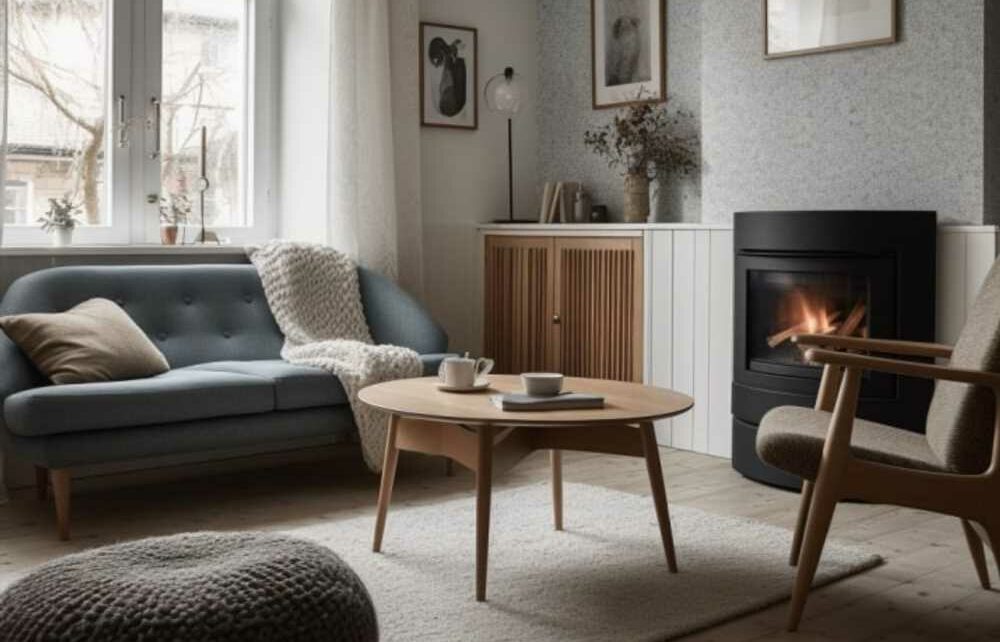YOU can tell a lot about a person based on how they style their home and it can have a huge impact on how people feel around a house.
The best homes have personality and character from a range of shapes and colours.


Whilst some styles keep coming back into fashion others are better left in the past.
We spoke to HomeHow's interior designer Sylvia James in collaboration with ConservatoryLand to learn about the key trends from the past 100 years, uncovering the biggest interior winners and losers
Starting in the 1920s the biggest trend was Art deco.
Sylvia explains, “Art Deco is classically about sweeping curves and angular geometrics with sumptuous colours and gold and chrome highlights. That’s why it's themes return time and again.”
Read more interior tips

I’m an interiors fan – five tips to make your home look more expensive

I’m an interiors fan here’s five simple ways to make your small bathroom look bigger
And whilst Bauhaus and Art Deco were the design winners of the decade, the biggest losers were African safari animal print and real fur.
People went to Moderne in the 1930s.
Moderne is still a common trend today but people avoid the Mock-Tudor designs that saw fake beams and uniformed interior design.
Similarly Mid-Century Modern was trending in the 1940s.
Most read in Fabulous

People are just realising how to unlock supermarket trolley without £1 coin

I know I’m the favourite mum at the school gates for dads – I know I’m hot

Woman suffers from brutal sun poisoning after a holiday in Cornwall

Princess Eugenie has given birth to a boy & reveals sweet meaning behind name
Sylvia says, “Although it wasn’t called Mid-Century Modern at the time, this interior trend is still popular today thanks to the Scandinavian-inspired furniture.”
But the biggest flop of the decade was war-time and post war time utility furnishing because of their lack of comfort.
FABULOUS BINGO: Get a £20 bonus & 30 free spins when you spend £10 today
Open plan living started in the 1950’s but there is still a bit of debate about the bubblegum pink and black and white chequered flooring that stood too much for many people's tastes.
The Hippy Style came into fruition in the 1960’s modern Bohemian style originating from this decade. Along with this came the impractical and unsustainable space age trend.
The world went Back-to-nature in the 1970s.
Sylvia highlights that: “In response to the plasticky, throwaway culture that sprang up in the 1960s, the 70s saw a real revival of natural materials and colours. Much like today, rattan, wood and macrame were popular textures in the home.”
We saw a wave of postmodernism in the 1980’s which featured over the top bold colours a long with the less popular Chintz.
Industrial and minimalism started trending in the 1990s.
Sylvia says, “Towards the end of the 1980s, many decaying warehouses and factories were turned into apartments. Keeping their original large metal windows and bare brickwork, the industrial look was born.”
By the 2000’s Shabby Chic was all the rage.
Sylvia says, “Shabby Chic is all about distressed furniture that has a slightly vintage, cottage feel. It’s the forerunner to Cottagecore with lots of white and pale pastel shades and a slightly romantic, French aesthetic.”
In 2010 we dug into the archives to bring forward Boho interiors. This trend was all about natural ideas and neutral pallets. Though most would agree we can leave the flatpack furniture in the past.
So what can we learn from this? Some trends are recurring hits and the others utter flops.
Sylvia has explained three current decorating trends which can date your home, or make it less desirable for selling:
1. Gold and copper fittings
Sylvia says, “Gold and copper hardware, like other metallics are likely to fall back out of fashion. You might think they’re timeless classics, but just take a look at brass fixtures and fittings. They were big in the 1980s but quickly looked dated and chintzy in our homes. So, it’s likely that gold and copper tones will suffer a similar downfall..”
2. Moody hues
Sylvia says, “Drenching rooms in dark hues creates a very distinctive interior, which is not to every buyer’s taste. Some buyers may be looking for a light and airy home, so you’re limiting your options. This is why the tried and tested advice is to keep things neutral.”
3. Maximalism
Sylvia says, “The exact opposite of the Scandinavian and Japanese forms of minimalism, the maximalism trend sees all available wall and floor space used to its full potential.”
Whilst this can look great, Sylvia advises that this can limit appeal if looking to sell your home, “An array of colours and styles can be quite overwhelming and hard for buyers to see past. Basically, a buyer wants to be able to picture themselves living in your home.”
Read More on The Sun

I hold the record for visiting over 1,000 Wetherspoon pubs – here’s my top 5

Elegance coach shares the most ugly & tacky sandals to avoid at all costs
Why naturalism is the trend to watch in 2023
Taking inspiration from the 60s, 70s and more recently the 2010s, Sylvia highlights: “Interiors incorporating a simple, neutral and cosy aesthetic will remain popular. Japandi and naturalism trends are bound to slowly evolve. But because they take in neutral tones and natural materials, and have a focus on sustainability, they’ll likely stand the test of time.”


Source: Read Full Article
